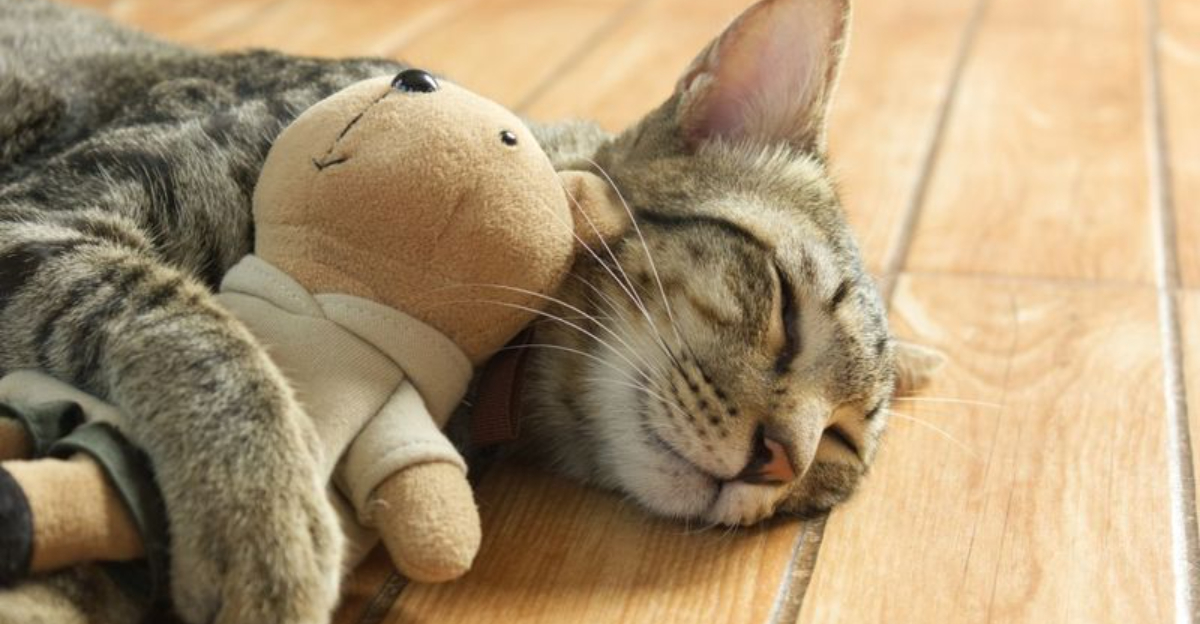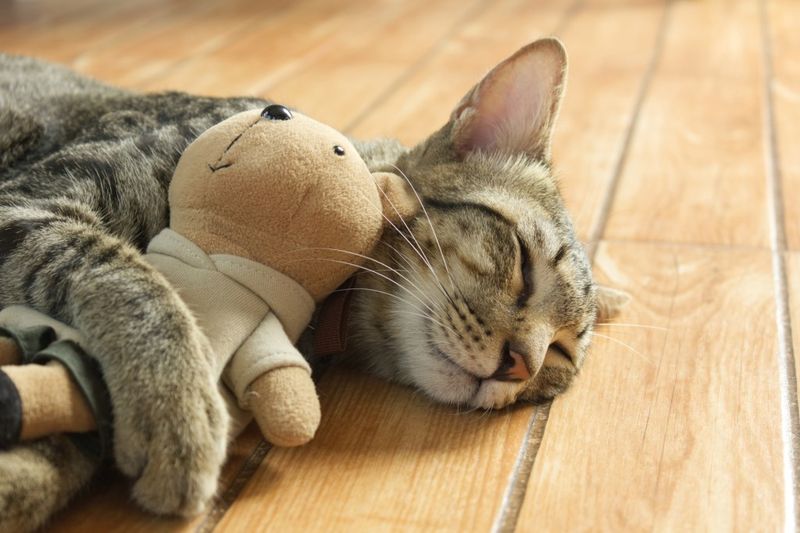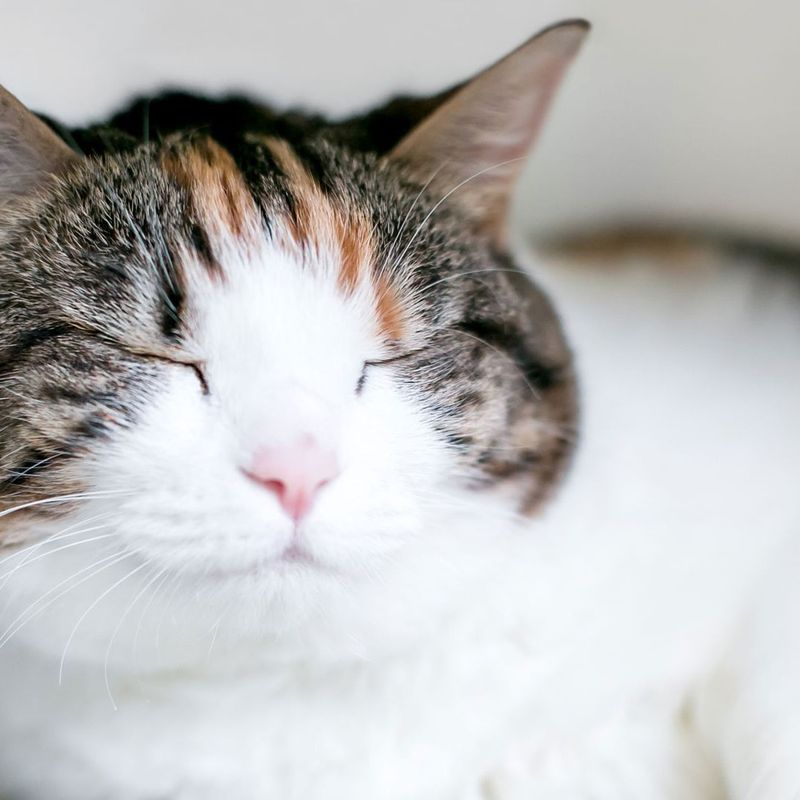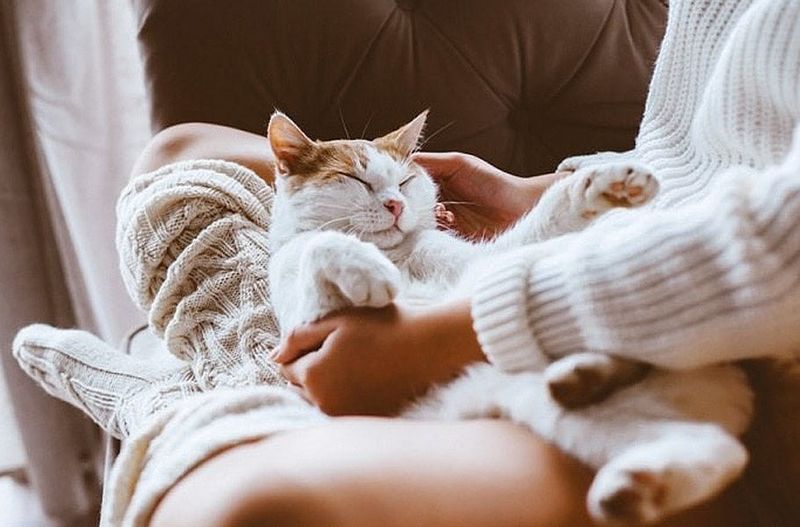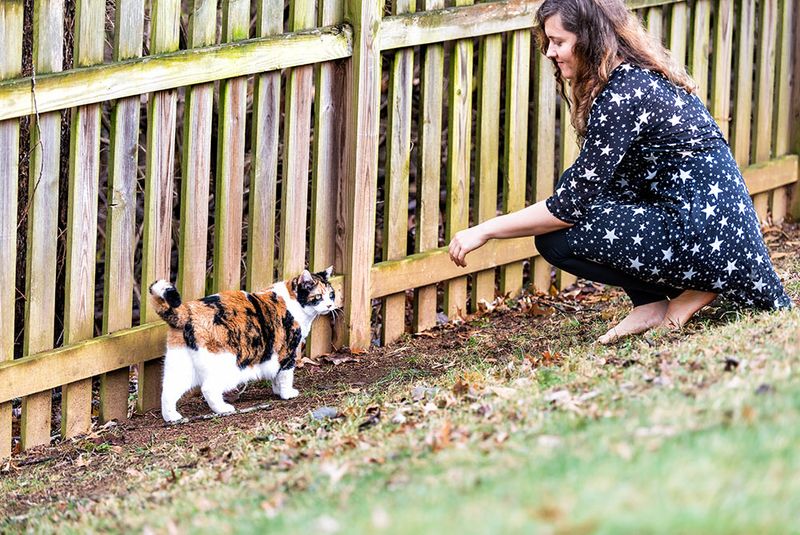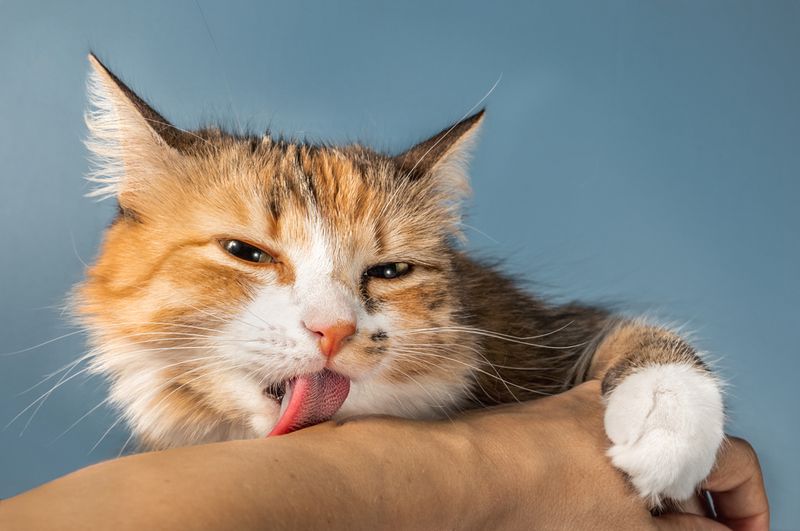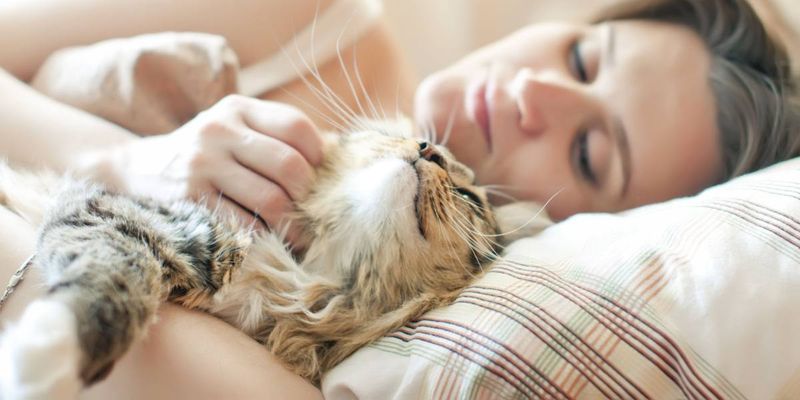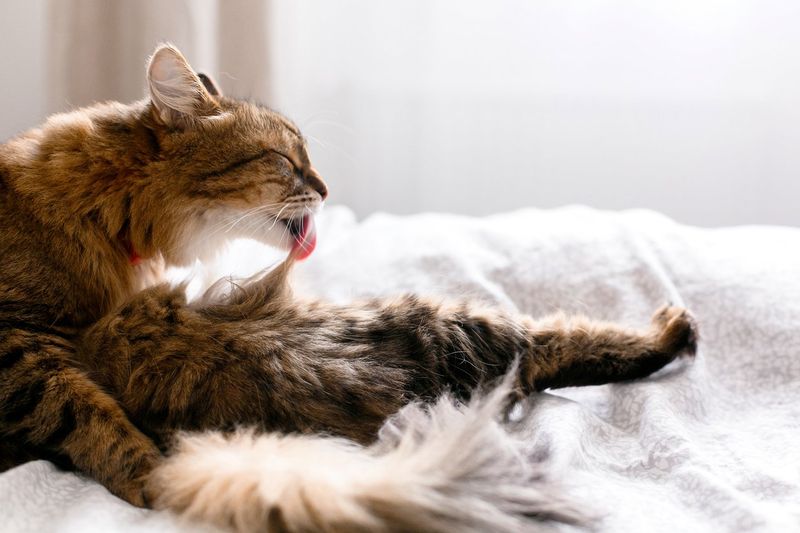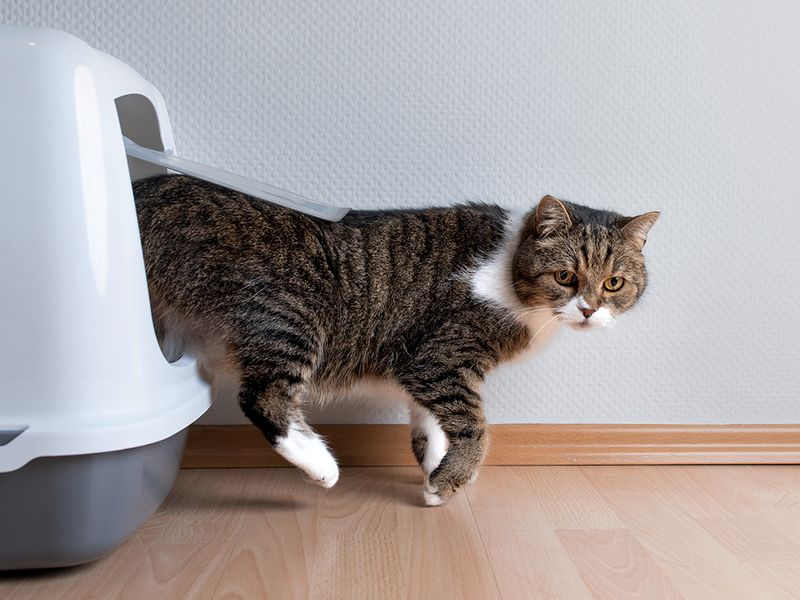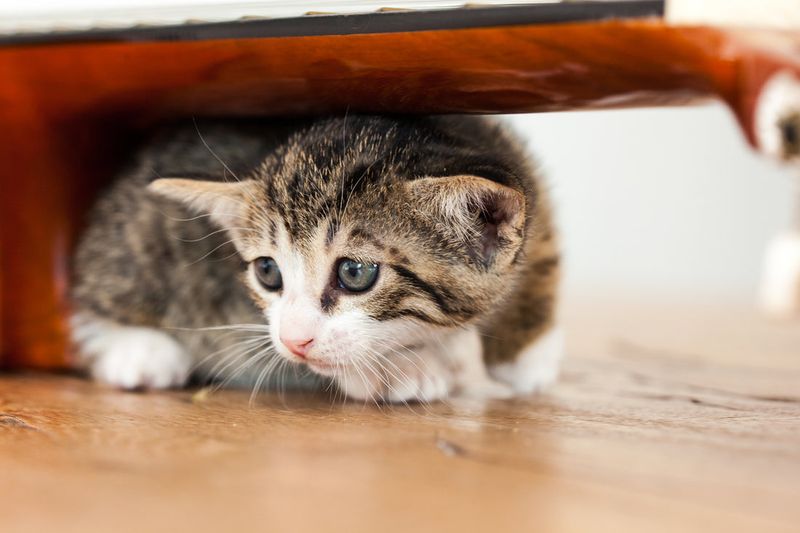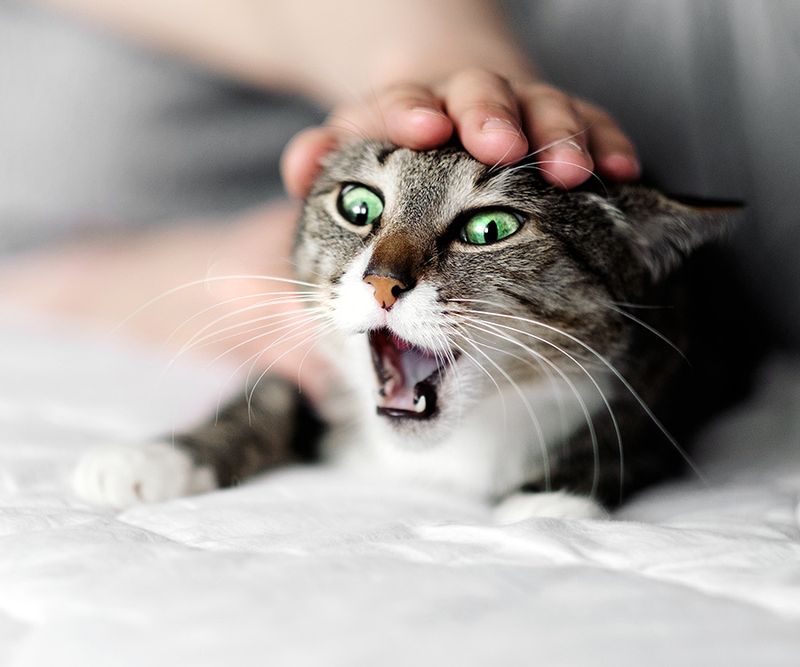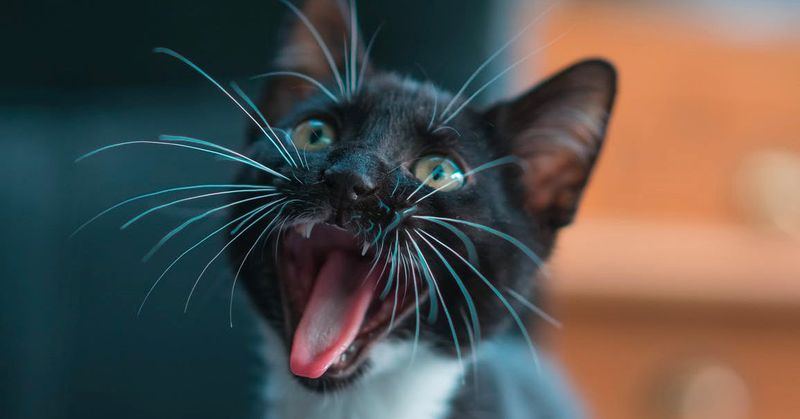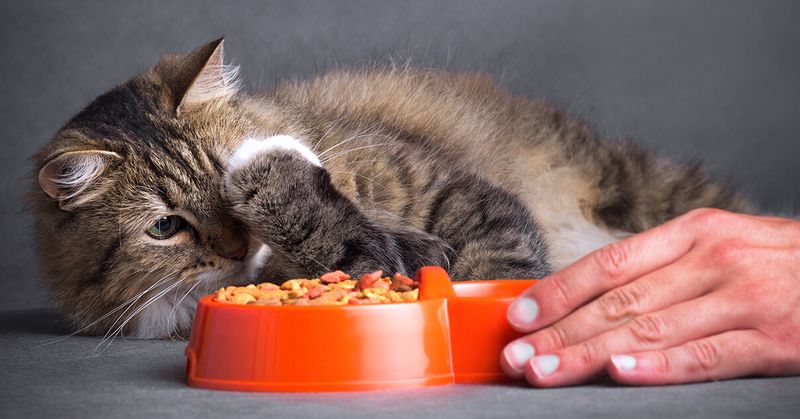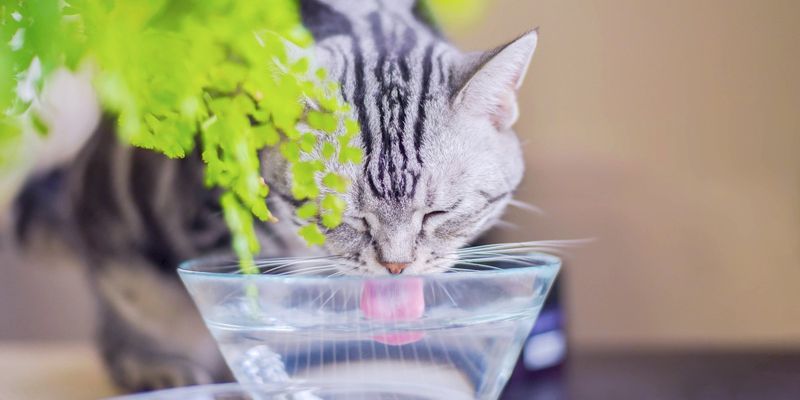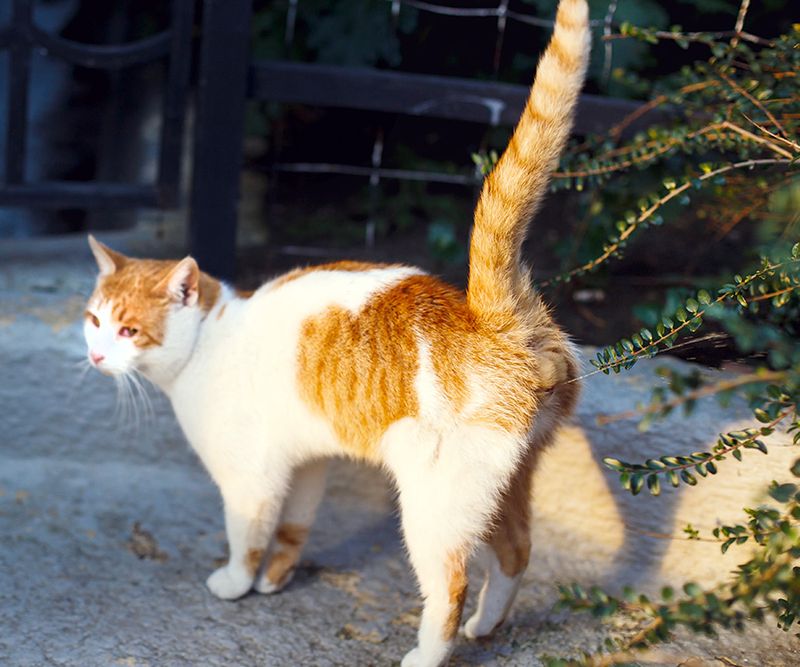📖 Table of Content:
- 1. Bringing You “Gifts”
- 2. Slow Blinking At You
- 3. Purring While Cuddling
- 4. Following You Around The House
- 5. Grooming You (Licking Your Hair or Skin)
- 6. Sleeping Near Your Face
- 7. Excessive Grooming Causing Bald Spots
- 8. Avoiding The Litter Box
- 9. Persistent Hiding For Days
- 10. Sudden Aggression Toward Family Members
- 11. Excessive Vocalization Without Cause
- 12. Refusing Food For More Than 24 Hours
- 13. Drinking Significantly More Water
- 14. Spraying Or Marking Inside The House
Cats communicate with us through their behaviors every day. Understanding what’s normal and what might signal a problem can help us be better pet parents and ensure our feline friends stay happy and healthy. From kneading and purring to excessive grooming and hiding, your cat’s habits tell an important story about their physical and emotional well-being.
1. Bringing You “Gifts”
Finding a toy mouse or, unfortunately, a real one at your doorstep isn’t your cat being creepy – it’s actually a compliment! Cats are natural hunters, and bringing you their prizes demonstrates both affection and respect for you as part of their family group. Your feline friend is essentially sharing their hunting success and trying to teach you a valuable skill.
Female cats often display this behavior more frequently, as in the wild, they would teach hunting techniques to their kittens. While not everyone appreciates these offerings, responding with positive attention (rather than disgust) acknowledges your cat’s natural instincts in a supportive way.
2. Slow Blinking At You
Cat experts call this the “kitty kiss” – when your cat looks at you and deliberately closes their eyes slowly. This gesture signals complete trust and contentment in your presence. In cat language, closing their eyes around you means they feel safe enough to be vulnerable.
Try returning this sweet gesture by slowly blinking back at your cat. Many cats will respond positively to this communication, strengthening your bond. This simple exchange creates a special moment of connection between species. Regular slow-blink exchanges can actually improve your relationship with shy or nervous cats over time. This subtle body language works wonders with cats who might be hesitant about direct physical contact.
3. Purring While Cuddling
That motor-like rumble from your contented cat signals pure happiness. Cats typically purr at a frequency between 25 and 150 vibrations per second, creating that soothing sound we love. The vibration actually promotes healing and reduces stress for both cats and humans!
Research suggests that cat owners experience lower blood pressure and reduced anxiety levels when cuddling a purring cat. Your feline friend is essentially providing you with free therapy sessions. Cats don’t just purr when happy – they also purr when injured or stressed as a self-soothing mechanism. Context matters, but that rumbling purr during cuddle time is definitely a sign your cat feels secure and loved in your care.
4. Following You Around The House
Your feline shadow trailing you from room to room shows genuine interest in your activities. Unlike the clingy stereotype of dogs, cats choose their companions selectively – your cat follows you because they genuinely enjoy your company.
This behavior indicates you’ve earned a special place in your cat’s world. They’re curious about your routines and find comfort in maintaining proximity to their favorite human. Some breeds like Siamese and Burmese are particularly known for this sociable shadowing behavior. Far from being aloof loners, many cats form deep attachments to their people. Your faithful follower is showing healthy social bonding that strengthens your relationship and provides them with environmental enrichment through your daily activities.
5. Grooming You (Licking Your Hair or Skin)
Those sandpapery licks on your hand or hair are your cat’s version of giving you a bath! Social grooming, or allogrooming, is a significant bonding behavior among cats. When your feline friend grooms you, they’re treating you as part of their family group. This behavior transfers their scent to you, effectively marking you as “theirs” in the cat world.
It demonstrates trust and affection in the most cat-appropriate way possible. Your kitty is essentially saying, “You’re my person, and I want everyone to know it.” While the rough tongue might feel strange, appreciate this gesture for what it represents – your cat has fully accepted you into their inner circle and wants to care for you just as they care for themselves.
6. Sleeping Near Your Face
Waking up to find your cat snoozing by your pillow demonstrates deep trust and attachment. Cats are most vulnerable while sleeping, so choosing your face or neck area for naps means they feel completely secure in your presence. There’s also a practical reason – your head radiates warmth, making it cozy for your heat-seeking pet.
Additionally, cats find your familiar scent and rhythmic breathing soothing. This sleeping arrangement allows them to monitor subtle changes in your breathing and movement. While occasionally inconvenient for your sleep quality, this habit reflects the strong bond your cat feels with you. They’re essentially treating you as they would a trusted family member in a cat colony, where sleeping in close contact provides safety and comfort.
7. Excessive Grooming Causing Bald Spots
Cats are naturally fastidious groomers, but when normal cleaning crosses into obsessive territory, it signals distress. Psychogenic alopecia – compulsive overgrooming resulting in hair loss – typically stems from anxiety, stress, or medical issues like allergies or parasites. Look for patterns in this behavior. Does it happen when you’re away, after household changes, or during thunderstorms?
The trigger could provide clues to the underlying cause. Bald patches commonly appear on easily-reached areas like the belly, inner legs, and base of the tail. This self-soothing mechanism requires veterinary attention to rule out medical causes before addressing potential psychological factors. Don’t delay seeking help, as this habit can become deeply ingrained and increasingly difficult to resolve over time.
8. Avoiding The Litter Box
Finding surprises outside the litter box isn’t just annoying – it’s your cat’s way of communicating that something’s wrong. Sudden litter box avoidance often indicates urinary tract infections, kidney issues, or digestive problems requiring immediate veterinary care. Behavioral causes include stress from household changes, dirty litter boxes, or litter type preferences.
Cats are extremely particular about bathroom cleanliness – would you use an unflushed toilet? They might also avoid boxes placed in noisy areas or those that are difficult to access. Address this problem promptly rather than punishing your cat. Medical issues can become life-threatening if untreated, while behavioral causes need environmental modifications to help your cat feel secure about their bathroom situation again.
9. Persistent Hiding For Days
Brief hiding during thunderstorms or vacuum cleanings is normal, but extended disappearing acts warrant attention. Cats naturally seek concealment when feeling vulnerable, particularly when ill or injured, as showing weakness would make them targets in the wild.
A previously social cat who suddenly vanishes under furniture for days might be experiencing pain, illness, or extreme stress. Dental problems, arthritis, and internal issues often manifest first as withdrawal behaviors before more obvious symptoms appear. Check hiding spots regularly without forcing your cat out, offering gentle encouragement with treats or toys. If hiding continues beyond 24-48 hours or accompanies other changes like reduced eating or drinking, contact your veterinarian promptly to investigate potential medical causes.
10. Sudden Aggression Toward Family Members
Your normally affectionate cat suddenly hissing, swatting, or biting family members indicates something significant has changed. Pain is a primary cause of unexpected aggression – cats can’t tell us when something hurts, so they lash out when touched near painful areas. Neurological issues, hyperthyroidism, and cognitive dysfunction in older cats can also trigger personality changes and aggressive responses.
Environmental stressors like new pets, visitors, or household changes might make your cat feel threatened enough to display defensive behaviors. Respect your cat’s space while investigating potential causes. Document when aggression occurs to identify patterns, and consult your veterinarian promptly. Wearing thick gloves during necessary handling protects you while getting your furry friend the help they need.
11. Excessive Vocalization Without Cause
Some cats are naturally chatty, but a significant increase in meowing, especially at night, deserves investigation. Hyperthyroidism, high blood pressure, and cognitive issues in senior cats commonly manifest as increased vocalization, particularly those haunting nighttime howls. Female cats in heat produce distinctive yowls, while unneutered males develop loud, persistent calling behaviors.
If your cat is already spayed/neutered, consider sensory changes – cats with developing blindness or deafness often vocalize more from confusion or insecurity. Certain breeds like Siamese are genetically predisposed to “talking,” but sudden changes from your cat’s normal communication style warrant a veterinary check. Recording the sounds can help your vet determine whether they’re pain-related, attention-seeking, or potentially linked to medical conditions.
12. Refusing Food For More Than 24 Hours
Cats may be finicky eaters, but outright food refusal beyond a day signals trouble. Unlike humans who might skip meals when dieting, cats physically cannot go without food for extended periods without risking serious liver complications called hepatic lipidosis.
Dental pain, gastrointestinal upset, respiratory infections (which affect smell and therefore appetite), and kidney disease commonly manifest first as reduced interest in food. Even stress from changes in routine, food type, or feeding location can trigger hunger strikes in sensitive cats. Monitor water intake alongside food refusal – dehydration compounds health risks rapidly in cats. Warming food slightly to enhance aroma or offering strong-smelling options like tuna might temporarily entice eating, but veterinary care becomes urgent after 24-48 hours of complete food avoidance.
13. Drinking Significantly More Water
Noticing your cat suddenly camping out at the water bowl? Increased thirst, called polydipsia, often serves as an early warning sign for serious conditions like diabetes, kidney disease, or hyperthyroidism. Cats naturally get much of their moisture from food, so obvious water consumption changes deserve attention.
A healthy cat typically drinks around 3.5-4.5 ounces of water daily per 5 pounds of body weight. Tracking water consumption by measuring how much you refill the bowl can provide valuable information for your veterinarian. Some cats prefer running water sources, which explains interest in dripping faucets. Summer heat or switching from wet to dry food might temporarily increase drinking, but persistent changes warrant professional evaluation. Blood and urine tests can identify underlying causes requiring prompt medical management.
14. Spraying Or Marking Inside The House
Finding urine on vertical surfaces like walls or furniture indicates spraying – a territorial marking behavior distinct from regular elimination problems. Unneutered males are the primary culprits, but females and even fixed cats may spray when feeling territorially threatened. New pets, neighborhood cats visible through windows, or household changes often trigger this behavior.
Cats mark to create “safe zones” when feeling insecure. Multi-cat households frequently experience spraying during social tension between feline housemates. Address this issue promptly with thorough enzymatic cleaning of marked areas. Pheromone diffusers like Feliway can help reduce anxiety, while providing adequate resources (litter boxes, perches, hiding spots) minimizes competition. Persistent marking requires veterinary consultation to rule out medical causes and possibly discuss anxiety medication options.
